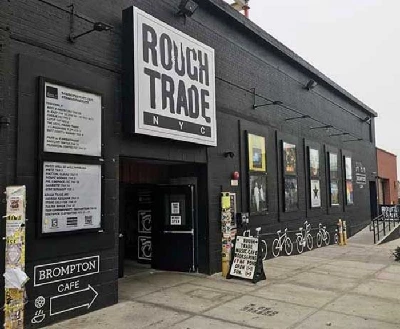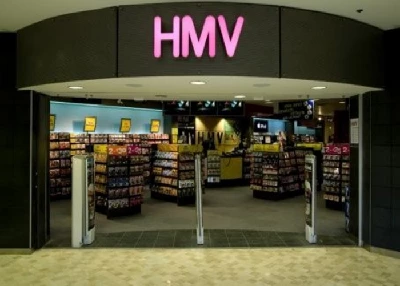Miscellaneous
-
Planet Vinyl A Natural History Part 3
published: 16 /
9 /
2017

In the third and final part of Dave Goodwin's examination of the rise of the vinyl record in 'Vinyl Stories', he asks what the future holds for vinyl?
Article
The first part of 'Planet Vinyl A Natural History' took us from the very start to when vinyl was just a twinkling in Mr Berlin's eyes to its rise in popularity and world domination. In part two of our journey into this rise of the vinyl record we examined the trends and fortunes of in-demand records with the help of an old friend called Jimmy. Firstly we examined its speed and size and then progressed to what is actually in the groove. During this adventure we also discovered the ups and downs of Jimmy's life, having spent over half a century on this planet. This third and final section of 'Planet Vinyl A Natural History' concentrates on the state of vinyl now and asks the question; What is the future of vinyl records?
Okay, so get your grey matter around this - A survey of British music fans discovered last year that a quarter of young adults buy records they never listen to. When you first read that you think its only a fourth of what the kids are buying now, but it is actually a sizeable chunk. Some might take this as baffling or pretentious behaviour, but the future of vinyl may rest on its ability to find selling points beyond its basic function as a music format. Having long since lost the battle for cost and convenience to rival formats, vinyl is nonetheless enjoying its most prolonged revival since the introduction of the CD. Bah, damn you,CD! Sales have been rising sharply each year since 2007, with a peak increase of 54% in 2014 - driven by strong figures in the United States, UK, and Germany, although records still account for just a fraction of total music sales.
Independent British retailer Rough Trade is typical of vinyl's rollercoaster fortunes. The company rose to prominence in the 1980's golden era for music with a record label that signed global stars such as the Smiths and a renowned store in West London, where A-list artists including Talking Heads performed, which led to a global distribution network and new stores from Paris to Tokyo. The empire crumbled dramatically as new formats emerged. Bah! samn you CD! The distribution network filed for bankruptcy in 1991 and the foreign departments closed. But after relaunching in 2007 with new management Rough Trade is alive and kicking once again. The record label is signing major acts, and new stores have opened in the UK and New York, the latter a 15,000 square foot warehouse which became the city's largest record outlet, at a time of many bricks-and-mortar stores shuttering. Indeed in my home city of Nottingham the vinyl shop downstairs in our local Rough Trade is thriving while upstairs the cafe has expanded to take a host of artists doing live sets on a regular basis.
Co-owner of Rough Trade, Stephen Godfroy, says that "This audacious move relies on delivering a 'third place' experience between home and work, which other formats could not offer." He then continues, "This was the original role of a record store, being more than a point of purchase...a place of congregation for independent, creative minds, a place that rewarded curiosity with serendipitous discovery, appealing to all ages and tastes in music." He then goes on to make some astounding observations about the music industry now, as he believes growth of the vinyl record has been supported by the plummeting cost of music. Pretty confusing that, I hear you churrup, but he says, "The last five years have seen a particular resurgence thanks to cheap access to music as if it were a utility, and younger generations discovering the merits of vinyl for the first time. Accessing music has become virtually free. This has put into sharp relief the value derived from owning a recorded music artefact, of which vinyl is the most attractive. Younger, 'format savvy' generations listen to music on many formats and devices, but increasingly choose to invest in vinyl for their most loved recordings, given the multi-sensory value vinyl uniquely provides." Rough Trade has chosen to widen its appeal through wide-ranging but carefully chosen commercial partnerships, with its stores creating special areas for book publishers, bicycles and even skincare. "We've been bolder than most when it comes to redefining what a record store can be," says Godfroy.
To return to the last two parts of this article, vinyl production relies on equipment that has not been modernized since the golden age and in which vital skills are in short supply. Today, believe it or not. there are around a dozen pressing plants in the United States and a handful in Europe that must serve the whole industry, and as demand grows the turnaround times can stretch into months. Remember the way in which we discovered how vinyl is made in the last two parts with pressings and lacquer? Well, today, just two companies worldwide produce the lacquer needed in mastering, one of which is a one-man operation in Japan. When his business was affected by the 2011 tsunami, so was the global industry. The whole of the vinyl industry depends on one chap in Japan? Bonkers!
Raik Hölzel, head of web and social media at Handle With Care, a Berlin manufacturer of physical media that specializes in vinyl states that "The whole business is based on 50-year-old machines and technology. The solution is to invest in developing new machines but there is still not so much money in the business to encourage the global players to invest. Everyone is waiting to see how the market will develop - 2017 could be the end of the vinyl run. For now, old machines mean more profits." Sales are up but spread across more smaller orders, says Holzel, who is encouraged by the proliferation of vinyl businesses across new genres. The Berlin Philharmonic orchestra is a new client. International sales have also been strong, with Holzel citing valuable partnerships with UK labels.
So, one way to compensate for problems in delivering volume has been to vary the product, and novelty releases are on the rise which range from bespoke artwork to coloured and patterned vinyl. Sounds familiar, doesn't it? Manufacturers also receive requests for bizarre variations such as vinyl pressed from coffee, blood and cremated remains. The problem is that digital music is unquestionably very convenient. It is now a standard and thus the routine way of consuming music on every day basis.
Here's an interesting way of looking at it - Analogue music requires more elaborate ritualized attention. It is routine vs ritual. Vinyl has a potential for being a better 'ritualistic' medium...you don't want to download your favourite food, but you go to a good restaurant to experience that food. Certain experiences are neither downloadable nor possible to save on a hard drive. If the record surge is to continue, the industry may need connoisseurs more than consumers.
Moving on, actual sales of vinyl in 2016 reached a 25-year high as consumers young and old are once again buying it. More than 3.2m LPs were sold last year, a rise of 53% on last year and the highest number since 1991 when Simply Red’s 'Stars' was the bestselling album. This was also the first year that spending on vinyl outstripped that spent on digital downloads. The deaths of some music world giants was a key driver in vinyl sales, as people invested in records as mementos. After David Bowie’s death he became the bestselling vinyl artist of 2016, with five albums posthumously featuring in the Top 30. His album 'Blackstar', which was shortlisted for a Mercury prize, was the most popular selling album of the year, while 'The Rise And Fall of Ziggy Stardust', 'Hunky Dory', 'Nothing Has Changed' and 'Changesonebowie' were also popular LPs. The statistics, compiled by BPI, show that this is the ninth consecutive year that vinyl has grown, thanks to events such as Record Store Day, which has now become a nationwide phenomenon, and the increase in shops selling vinyl. Even supermarkets such as Tesco now stock vinyl and at least thirty albums sold more than 10,000 copies in 2016, a stark contrast to 2007 when digital downloads began to take hold and a meagre total of 200,000 LPs were sold overall.
Vanessa Higgins, the CEO of Regent Street and Gold Bar Records, and an independent label member of BPI Council, says, “It’s twofold in that older people are going back to vinyl but I also think the younger generation are discovering it in a way they weren’t before. I think we are going to see increasingly over this coming year that young people still want something tangible and real and that’s where vinyl is taking on the role that the CD used to have.” She said the trend towards streaming – which has rocketed 500% since 2013, with 45 billion audio streams over 2016 – had led people back to vinyl as a way of tangibly owning music and because streaming had encouraged music discovery. Higgins says, “It used to be music discovery was mainly limited to the radio, but now people are free to look and listen to all sorts of music, so people are hearing so much more new or different music than they were before. They are finding music through streaming and. if they love it, they are going out and investing in it in a physical format. The capital required to invest in vinyl is a lot upfront. And because most vinyl is pressed in Europe, the price to manufacture has gone up this year. I think what we are going to see this year is more smaller artists and independent labels start to benefit from vinyl as well because so many different types of music fans are now willing to go out and buy it.” And here's the big thing! Higgins also predicts that the digital download will disappear entirely over the next few years as it becomes redundant.
Today, vinyl sales still only account for 5% of the albums market, but they are becoming increasingly important sources of income for record labels and musicians. The boost in vinyl sales is part of a wider shift in the fortunes of the music industry back towards turning a profit again. In December last year, one of the biggest global record labels, Warner Music, reported their best profits in eight years, of which $1bn (£810m) came directly from streaming, and in the first half of 2016, streaming revenue in the US grew by 57% to $1.6bn. In contrast, CD sales were down 10% on last year.
So, looking at the evidence, it seems that for the near future streaming is the way we are going to discover our music and to save it properly we are still after all these years going to go out and buy that piece of music on a vinyl record. When the CD made its way into the world of music everyone said then that this would mean the death of vinyl. It has to be said that it nearly was. But we are now on the verge of seeing the death of the digital download and the sales of CDs are down year on year too
So does that mean that vinyl is still the ultimate winner? I must admit that I buy all my music on vinyl now. Are we about to go full circle and see vinyl as the main format for music? It is certainly biting at the heels of the CD and here's something else to make you think. Remember the humble tape cassette? BASF? TDK? Chromium C15, C30, C60, C90 and all that? I hear that Arcade Fire have just released their new single on vinyl and guess what...limited edition cassette tape. Now then...
Picture Gallery:-

